
Unfiltered is a recurring CBB series featuring insights, ideas and opinions from craft beer professionals, crowd-sourced via Craft Beer Professionals, our Official Conversation Collaborator.
An anonymous poster in the CBP group recently asked about a practice at their brewery they weren’t sure about. The situation: They have a ~3hL unitank, and the practice is to “transfer a beer into the clean unitank, carb, keg, blow out whatever is left in the cone, and then transfer another beer in right after that. We could do this up to 4 times, going from lightest to darkest beer.”
So, no cleaning in between transfers. And it’s not a time/resource issue, more of “this is how we’ve always done it” thing. Plus, since the unitank is a CO2 rich environment from carbing the previous beer, then there shouldn’t be any oxygen. So, does anyone else do this? Here are some of the responses.
Do I need to clean between transfers?
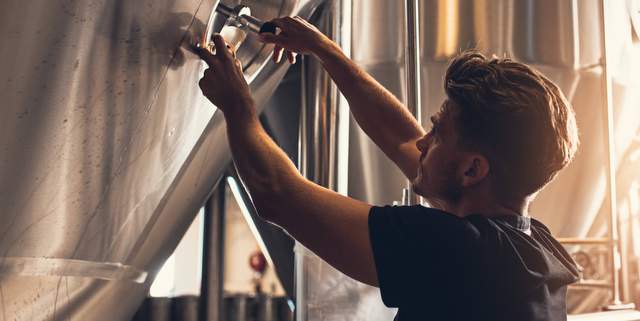
Andrew Foss, Human Robot Beer: I believe that this is a totally acceptable practice. If you trust your upstream procedures, you are benefiting from a better purge than you are likely to get off of a CIP, and you are saving chemicals, water, co2, and time. This is very common practice at production breweries.
Clay Fussell: While you’re avoiding DO pickup, you’re introducing some yeast. If it’s the same beer and same yeast strain there’s not much concern. If you’re using different strains with different levels of potential attenuation you could have a problem with fermentation in packaging. It’s also worth considering that if you have sanitation issues with the first batch you now may have contamination microbes in four batches instead of just one.
Dean Mcleod, Bru-Rite Consulting: Ecolab have a new single-pass, no-rinse combo acid wash and sanitizer that you run under co2 pressure. Perfect for bright tanks. There’s no need to take unnecessary risks.
Danté Alexander Maderal: Clean and sanitize in between for sure. For me the issue is preventing the spread of an accidental infection before it reaches several otherwise clean batches. It only takes a few CFUs to infect a beer. I don’t know how you could be certain Beer A is clean without doing a series of micro testing, and that takes time which I would use to just clean and sanitize the tank anyway.
Josh Kauffman, Vasen Brewing Co.: On the larger scale with great sanitation it’s potentially batch/time saving. On your size it is likely residual homebrew bullshit.
- Andrew Zinn: @Josh, could just as easily be practices brought by a head brewer or owner who used to work at a bigger production cellar. I associate an almost superstitious level of cleaning with homebrew more than production. This sounds like practices brought on from a multi-shift brewery to me.
Ashton Lewis: If the beers are all clean, sold, and enjoyed by your customers, what’s the problem? Cleaning between uses needs a logical reason. Are you having issues that you suspect may be caused by this practice?
- Matt Kahn: I’m not sure I agree with this. The theory – “if the customer doesn’t complain, what’s the problem?” – can be extended to many process variables (inferior ingredients, poor standards, etc.) resulting in less than ideal quality. The producer should always set the bar higher than the customer to ensure maximum customer satisfaction. Not cleaning between batches means knowingly contaminating your beers with (small amounts) of other beers and in my opinion not a best practice, although I agree that the practice may be ok if it’s the same beer campaigned several times in a row. One brewer’s opinion.
Tommy Paul: We often run an SIP loop under pressure so long as the tank has not been sitting with residue for more than 24 hours. We find it’s a good mid point but is beer specific. For example we would not go from a fruited sour or IPA to a Pale Lager
Sam Bates, Cellarmaker Brewing: Honestly, you can always rinse and sani under pressure, making sure to purge the hoses/pump you’re going to use with that tank pressure. Have done this up to 3 beers in a BT, as long as you’re not doing a huge crossover in styles. Don’t forget to fun it through the carbstone either.
Troy Rassmussen: If you’re using the same yeast between the aforementioned brews, and you plated those brews to ensure no other microbes were present before or during fermentation, then there shouldn’t be an issue. BUT and that’s a huge but, you need to ensure you’re not cross contaminating your beer. If the first beer that is sent to BT is contaminated then you can bet the rest will be too.
- Andrew Zinn: Troy, I’m going to throw it out there that a 3hl (2.5bbl) brite is going to fill kegs for immediate use. As long as they aren’t filling for extended warm-store, I’d imagine they move through product quickly enough that plating can be skipped. It would still be good practice, but at this scale true to brand and QA/QC means something wholly different than if they were running packaged flagships to multiple markets.
- Troy Rassmussen: Andrew Zinn solid points indeed. To be true, if there has not been issues with the final product then I agree 💯. It was not mentioned that there were issue, just that the poster was curious about the process. My comment is based on the concept of ensuring you know what’s in the final product for Qa/QC purposes and is a suggestion for the poster should they want to verify the above mentioned concern.
- Andrew Zinn: Troy, totally. If I had an ATP meter and could do a quick swab, or better yet qPCR, I’d do it without hesitation. This small that labor, energy, chemical, tank space etc. savings may actually be a meaningful percentage of direct overhead. Everyone goes on and on about how a small brewhouse can’t be profitable, but if it’s run efficiently with managed overhead and sells well direct to consumer, those people are wrong. That said, on a 2.5bbl setup…I can’t imagine really making it work well with more than one brewer total on staff, and a senior (to the OP) brewer is kinda implied here.
Stephen Monahan: If there’s nothing hoppy or fruity you’re going on top of you’re good. They do it all the time as a standard in Europe. I must say though, I’d recommend you start teeing off your sample port and just shove a carb stone with a long stem in your ferm tanks provided they can handle 1 bar of pressure. I switched to this pretty early on and saved myself 20 hours a week and avoided more DO pickup. You will wonder why you ever did transfers at all a few months from now.
Shawn Markman: I’m not sure if you’ve ever stuck your head in the manway before cleaning a tank, but with even a beer that’s been moderately dry-hopped, the walls are like a dirty-diaper. Seriously. We run 15BBL unis and there’s no way I would rack fresh wort into a dirty tank. There’s trub stuck to the walls all the way up the cone, and about a foot up the vertical wall. We have one Brewer, and he regularly cleans a tank during a brew day, then transfers that brew into that tank. It takes a little bit of time management, but totally doable. So with that model, your only added expense is chemicals, water, CO2, and power. No added labor expense.

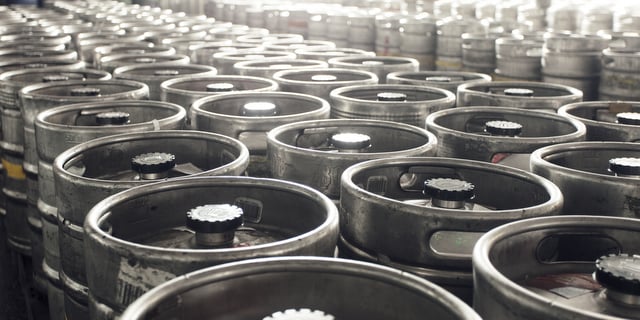
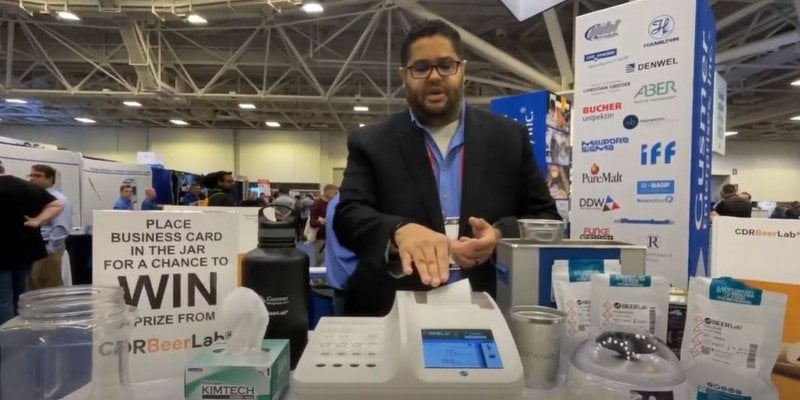
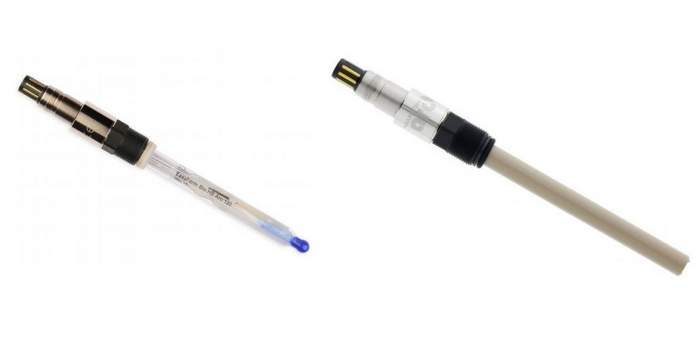
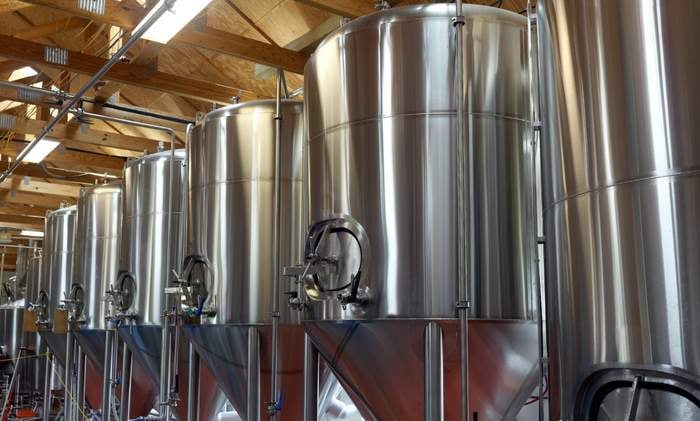
Joel Halbleib says
I think it’s fine on that scale. At 3hl those kegs will be in cold storage or drank before any different strain of yeast between batches could attenuate further. A quick acid sani under pressure is also easy if you are going to store one batch longer. Imo